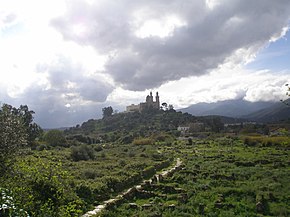Hippo Regius

Hippo Regius ruins
|
|
| Location | Algeria |
|---|---|
| Region | Annaba Province |
| Coordinates | 36°52′59.6″N 7°45′6.8″E / 36.883222°N 7.751889°ECoordinates: 36°52′59.6″N 7°45′6.8″E / 36.883222°N 7.751889°E |
Hippo Regius (also known as Hippo or Hippone) is the ancient name of the modern city of Annaba, in Algeria. Hippo Regius was a Phoenician, Berber and Roman city in present-day Annaba Province, Algeria. It was the locus of several early Christian councils and home to the philosopher and theologian Augustine of Hippo.
Hippo Regius was a Tyrian colony on the west coast of the bay to which it gave its name: Hipponensis Sinus, first settled by the Phoenicians probably in the 12th century BC; the surname Regius 'of the King' was bestowed on it as one of the places where the Numidian kings resided. The name Hippo is from Punic ûbôn 'harbor.'
A maritime city near the mouth of the river Ubus, it became a Roman colonia which prospered and became a major city in Roman Africa. It is perhaps most famous as the bishopric of Saint Augustine of Hippo in his later years. Advancing eastwards along the North African coast, the Vandals laid siege to the walled city of Hippo Regius in 430. Inside, Saint Augustine and his priests prayed for relief from the invaders, knowing full well that the fall of the city would spell conversion (to Arianism) or death for many Roman Christians. On 28 August 430, three months into the siege, St. Augustine (who was 75 years old) died, perhaps from starvation or stress, as the wheat fields outside the city lay dormant and unharvested. After 14 months, hunger and the inevitable diseases were ravaging both the city inhabitants and the Vandals outside the city walls. The city fell to the Vandals and King Geiseric made it the first capital of the Vandal kingdom until the capture of Carthage in 439.
...
Wikipedia

